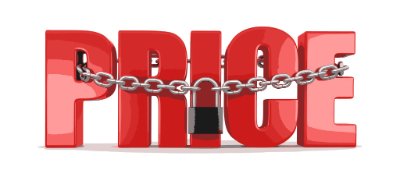 Yesterday I shared that price and the vast majority of objections that surround price are merely an excuse for delaying or deferring making a decision. Understanding the psychology surrounding price is important for any selling organization that wants to grow both the top and bottom lines.
Yesterday I shared that price and the vast majority of objections that surround price are merely an excuse for delaying or deferring making a decision. Understanding the psychology surrounding price is important for any selling organization that wants to grow both the top and bottom lines.Today, I’m going to share how you can avoid the issue altogether.
Disarming The Price Objection & Desire to Negotiate
The first thing sellers must do to alleviate price pressure is understand what’s causing it. If you’ve read yesterday's post alone, you are in a better position to disarm price. Simply by understanding that price concerns are often a proxy for decision concerns, smart sellers can turn the focus back to the issues that truly connect to action.
That said, to truly eliminate this issue (or come as close to eliminating it as possible), it is important that sellers follow three rules:
1. Deal with price earlier in the conversation.
The first mistake sellers make is they allow the price issue to be avoided until the end of the sales process. At Imagine, we teach that price (as well as terms and conditions) should be addressed before the seller makes a recommendation to purchase.
In Demand Creation Selling™ there are four distinct segments an opportunity goes through. The second segment focuses on defining the problem that needs to be solved, assessing the cause of the problem and determining the cost of the problem. The third segment begins with a direct conversation about the resources and approach the customer/prospect will/can take to solve the problem.
Dealing with price issues here is more effective for three reasons:
- Price is addressed in the context of the problem being solved.
- Price is addressed before the fear of deciding takes hold.
- Price is addressed while there is still time to adjust the proposal based upon what the customer/prospect can afford.
You might say something along the lines of, “Mrs. Jones, as we’ve just discovered, the inability of the company to control the inflow and fluctuation of materials is costing you between $800,000 and $1.3 million per year. As you consider the company’s ability to address this problem what resources would you be able to put towards a solution?”
2. Bring the issue to the forefront.
Don’t wait for the customer/prospect to ask you about price. Don’t assume that they’ll be reasonable in their approach to solving a problem you’ve helped them understand. Bring price to the forefront. If people want to disqualify themselves on price – that’s okay!
Your goal should be to prevent the price objection, not to overcome it. As I shared in the first rule, that means you need to be adept at leading your customer to understand the cost of their problem.
Remember that pricing is a process of trade-offs, so deal with it that way. Going back to our previous example, if Mrs. Jones came back and said they’d be able to allocate about $450,000 to a solution, and you know that won’t solve the entire problem, you might say something like this, “Mrs. Jones, that’s great. $450,000 will certainly help make a dent. It won’t, however, solve the problem entirely. At this point we’ve got a choice. We can address a part of the problem now, we can create an approach that will allow you to solve the problem over a longer period of time, or we can elect to do nothing. What preference do you have?”
3. Understand that price is a signal.
Your price is a statement you are making about the value of the solution you provide. If you’re making big promises, you need a price to support that promise.
I started this post by sharing that price is an excuse. I’ve focused on how the customer/prospect uses it as an excuse, but the full truth is that salespeople are just as likely to use it as an excuse as well. Rather than having confidence, or spending the time up front to lead your customer to understand their issues, salespeople simply use price as the excuse for failing to win the business.
The solution here is to be clear on the value of your offering, and be proud of that price in the market.

 Doug Davidoff
Doug Davidoff